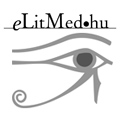The eLitMed.hu medical portal uses computer cookies for convenient operation. Detailed information can be found in the Cookie-policy.
LAM Extra for General Practicioners - 2014;6(03)
Content
[The impact of vitamin D in infertility and the role in pregnancy and in nursing period]
[Various medical associations issue different recommendations for the prevention and treatment of vitamin D deficiency. These significant differences are partly explained by the different definition of normal vitamin D level and the use of completely different mathematical models to predict the increase in vitamin D level as a response to therapy. According to the Institute of Medicine, the target vitamin D level is 20 ng/ml, whereas the Endocrine Society recommends 30 ng/m as the minimum target value. These differences show that the two Society have different views on the risk of adverse effects. Screening, however, is not recommended by either society. In this review I summarize the role of the vitamin D supplementation in the prevention of infertility. Also, I suggest the protective effect of the vitamin D during the pregnancy. In my opinion screening program against D hypovitaminosis should be performed in case of infertility and in pregnancy, because data show a protective role of vitamin D against many disease of newborn. ]
[Epidemilogy of hepatitis C virus and possibilities of transmission]
[The medical impact of hepatitis C (HCV) is significant worldwide. The main consequences are chronic hepatic injury, cirrhosis, and hepatocellular carcinoma formation. The estimated global prevalence is 3% with 180 million infected people worldwide. The prevalence <1% in Hungary. The prevalence increased between 1990 and 2005 in East Asia, Western Europe, and West sub-Saharan Africa. There is characteristic geographical distribution of the main HCV genotypes. The mode of transmission can not be identified of 40% of cases. The most frequent transmission is the intravénás drug injection in the developed countries, and unsafe health procedures in developing countries. The sensitive, nucleic acid amplification testing, identification of high-risk groups, development of vaccination would help the HCV prevalence in the future. ]
[The possibilities of pharmacological treatment of obesity]
[There have been attempts to treat obesity with medicines for nearly 100 years, since the discovery of ephedrine. For decades amphetamine derivates and agents stimulating or inhibiting the release of noradrenaline and dopamine have been applied. However, most of theses drugs had to be gradually withdrawn, due to their adverse effects on the cardiovascular and central nervous system or their sympaticotonic effect. Dexfenfluramine (Isolipan), which was introduced in the 90s, did not have such side effects, but it turned out to potentially cause valvular heart disease. Finally, sibutramin (Reductil) was introduced, which again had to be withdrawn in 2010 due to its hypertensive and cardiovascular side effects. After all, we were left without any appetite-suppressant drugs. Orlistat therapy, (Xenical 120 mg, alli 60 mg - OTC), which inhibits the absorption of fat, can eliminate only 30% of the consumed food's fat content, at the price of gastrointestinal side effects. The latest result of research carried out wordwide is that in 2012 the FDA approved commercial distribution of the selective 5HT2/c serotonin agonist lorcaserin (Belviq), which enhances satiety, in the USA. Unfortunately, in 2013 the EMEA temporarily postponed the lauch of this drug, until certain adverse effects are excluded. For diabetic patients, the GLP-1 agonist exenatid and the GLP-analog liraglutid, which can also reduce body weight, are available in the form of injections. ]
[Recognition of the characteristics of rare types of arthritis]
[Recognition of the characteristics of arthritis is crucial for making a correct diagnosis. Several aspects of the history and physical examination could help the diagnosis, such as the mode of onset (acute, insidious), duration of symptoms (self-limiting, chronic), number of affected joints (mono-, oligo-, polyarthritis), distribution of joint involvement (symmetrical, asymmetrical), localisation of affected joints (axial, peripherial) and sequence of involvement (additive, migratory, intermittent). Other important aspects for the correct diagnosis are the characteristics of the patient (gender, age, family history) and the presence or absence of extra-articular features of disease. The articular pattern may change with time in the course of a disease, and the single clinical pattern of joint disease may correspond to more than one diagnosis. Evidence of some distinct articular patterns may limit the spectrum of diagnostic options and reduces unnecessary diagnostic testing. The diagnostic process may require the addition of laboratory examination, imaging techniques, and other tests to refine the analysis. In this article, we report a case where joint punction and histological elucidation was necessary to make the correct diagnosis, because a syndrome of acute, destructive sterile arthritis mimicking articular infection might be present in a variety of joint disorders. In this paper, we highlight those characteristics that are distinctive for particular rheumatological disorders, in order to help starting treatment early.. In a substantial number of patients the cause of the diseases remains undetermined. However, a detailed anamnesis and physical examination remain the cornerstone of a diagnostic evaluation. ]
1.
Clinical Neuroscience
[Headache registry in Szeged: Experiences regarding to migraine patients]2.
Clinical Neuroscience
[The new target population of stroke awareness campaign: Kindergarten students ]3.
Clinical Neuroscience
Is there any difference in mortality rates of atrial fibrillation detected before or after ischemic stroke?4.
Clinical Neuroscience
Factors influencing the level of stigma in Parkinson’s disease in western Turkey5.
Clinical Neuroscience
[The effects of demographic and clinical factors on the severity of poststroke aphasia]1.
2.
Clinical Oncology
[Pancreatic cancer: ESMO Clinical Practice Guideline for diagnosis, treatment and follow-up]3.
Clinical Oncology
[Pharmacovigilance landscape – Lessons from the past and opportunities for future]4.
5.






